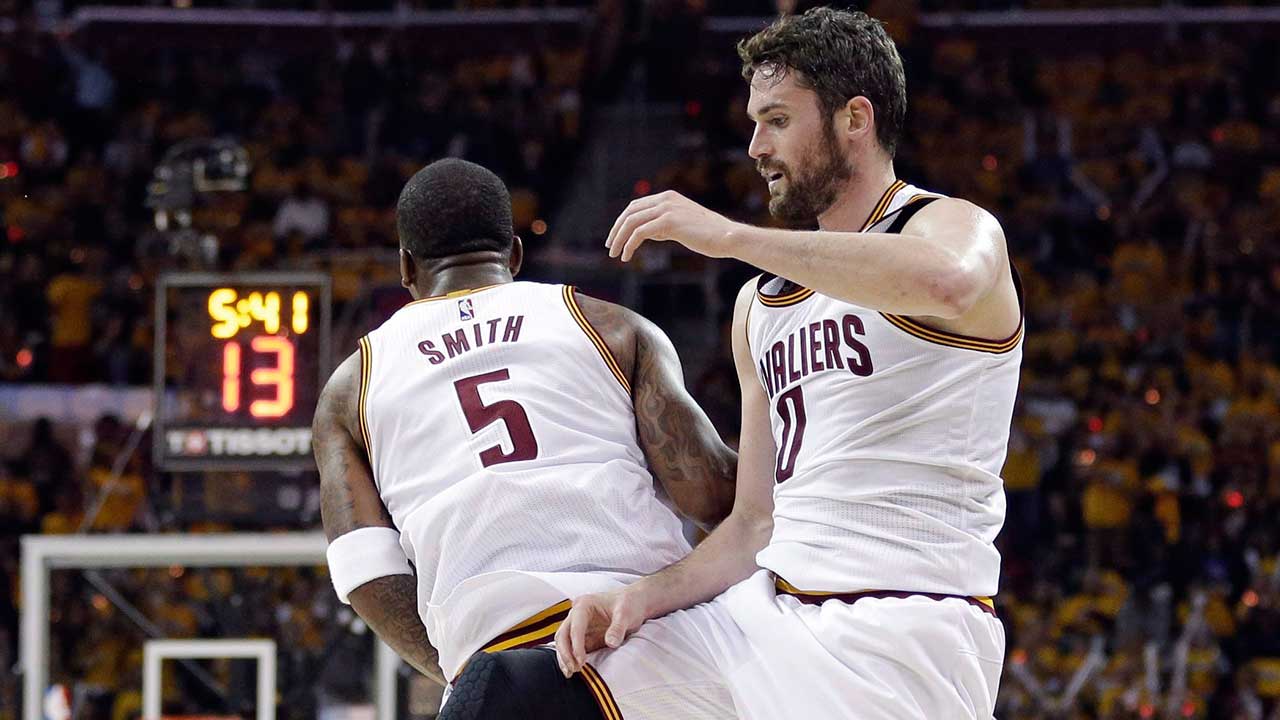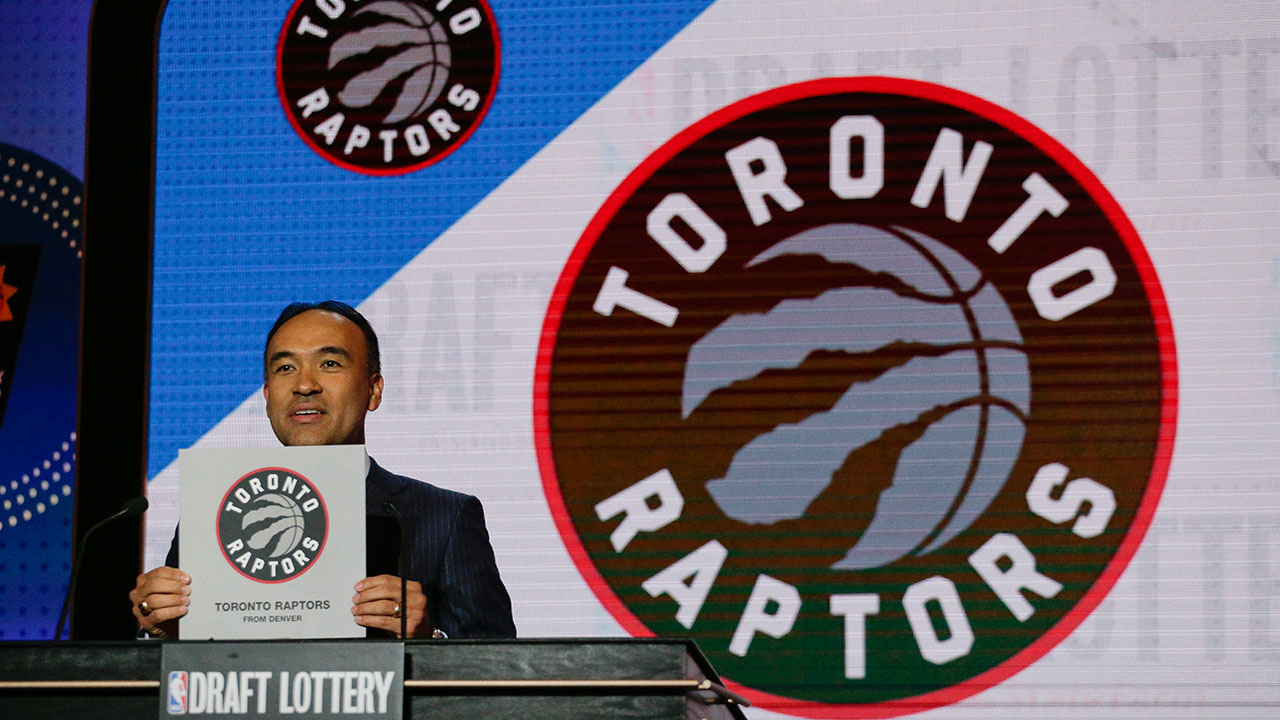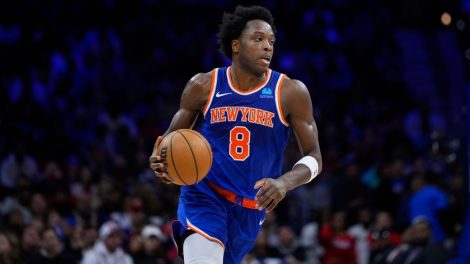The NBA Playoffs have always been prone to slow starts, building towards crescendos.
Or so the story goes.
Basketball is simply not an upset driven sport over seven-game playoff series. One game? Anything can happen, which makes the NCAA tournament fun, where 40 minutes and a shorter three-point line always puts upsets and comebacks in play.
Cinderella stories have never been a big part of the NBA’s playoff fabric. The storied teams in league lore aren’t the upstart Davids – they don’t exist – but the brutish Goliaths as every decade has yielded a super team or two that rule the league. The best teams almost always win.
And in this year’s playoffs, they’ve been winning by bigger margins than ever, as fans of the Toronto Raptors would know well. Through 68 games the average winning margin has been 12.9 points a game – more than double the regular season gap. The Raptors did their part, finding themselves caught under what appears to be an unstoppable Cleveland Cavaliers steamroller helmed by LeBron James.
Toronto’s second-round sweep at the hands of the Cavaliers, a series in which they never led at halftime and held the fourth quarter lead once, was one of an NBA-record four sweeps in the first two rounds, all by the Cavs and the equally dominant Golden State Warriors.
It’s an exaggerated twist on a theme. In the 33 years since the league went to a 16-team playoff format only three eight seeds have knocked off a No. 1 to win a seven-game series. When the league played best-of-five first-round series, the No. 8 seed won twice.
And it might get worse before it gets better. In the NBA’s two most recent CBA negotiations, the league has made efforts to make it easier for teams to keep their core of talent together and harder to build super teams, moves designed to help smaller markets compete.
The only problem? When lucky wrinkles appear and elite teams are created – the world’s greatest player (James) wanting to play close to his home in Akron, or a 73-win team like Golden State having room to add a superstar (Kevin Durant) under its salary structure – those same measures mean it’s almost impossible to build teams to dislodge them.
And don’t look for a lucky underdog to get the job done, the NBA doesn’t feed them. It’s telling that the closest thing to an underdog champion the league can point to might be the 1995 Houston Rockets winning a title as a sixth seed, having to mow down teams with the four best regular-season records en route. “Never underestimate the heart of a champion,” was then-Rockets head coach Rudy Tomjanovich’s rallying cry.
But the plucky Rockets were defending champions, their lineup anchored by first-ballot Hall-of-Famers Hakeem Olajuwon and Clyde Drexler with all-time role player Robert Horry winning the second of his seven NBA titles. Not exactly cuddly underdogs, in other words, but that’s about as close as it gets in a league ruled by heavy favourites.
[relatedlinks]
According to research by Brandon Anderson of themedium.com, since the 16-team tournament was introduced, 22 of the past 33 NBA champions have been No. 1 seeds and NBA Finals have typically featured an average total seeding of 3.52.
In that sense, a third straight Cavs-Warriors final would play to form, with the Cavs as the No. 2 seed in the East and the Warriors the No. 1 in the West.
But this is getting a bit much, as even the conference finals appear to be mere formalities as the Cavaliers and Warriors appear to be locks to meet in the NBA Finals for the third straight year. Combined, the league’s two current super teams are 19-0 in the playoffs – the first time two teams have been undefeated this far into the post-season.
The conference finals are three games old and already we’ve seen a 36-point blowout by the Warriors over San Antonio in Game 2 (aided by the injury suffered by Spurs star Kawhi Leonard in Game 1) and the Cavs returning from a 10-day break between rounds to open a 28-point lead over Boston midway through the third quarter of Game 1 on their way to a never-in-doubt, 13-point romp, erasing the home-court advantage the Celtics worked all year to earn in the space of 48 minutes.
The Finals are scheduled to begin June 1. Wake me up and we’ll see you there.

Kevin Love and J.R. Smith celebrate during the 2017 playoffs. (Tony Dejak/AP)
The obvious contrast is the NHL, the NBA’s distant winter cousin, where blowouts like the Ottawa Senators’ 5-1 win over the Pittsburgh Penguins on Wednesday almost never happen and a league-record 18 first-round games – 43.2 per cent of those played – required overtime. Since the first round ended, the Sens’ big win over Pittsburgh was just the fourth game to be decided by more than two goals. Twelve of the 22 games in the second and third rounds have been one-goal games and Thursday night’s overtime win by Anaheim over Nashville was the fifth to require extra time. There have been 46 one-goal games already, putting the league’s 2007 playoff record of 51 one-goal games in almost certain jeopardy.
The NBA can only wish for that kind of competitiveness. Celebrity analyst Charles Barkley underscored the contrast after watching the Warriors blow the Utah Jazz away in Game 4 of their second-round sweep to advance to the Western Conference Finals.
“Thank God for the NHL playoffs,” Barkley said on the NBA on TNT post-game show. “That’s what I’d be watching in the back instead of these blowouts.”
Perhaps more concerning is that the NBA’s apparent top-heaviness may get worse before it gets better, and could be made worse by the precise measures the league has taken to make it more difficult to build super teams.
In the past two CBA negotiations the league has made moves that in theory should boost parity but are seemingly having the opposite effect.
In 2011 the league ushered in much stricter penalties for teams that try to spend their way into contention. Where teams that exceeded the luxury tax used to have to pay $1 in tax for every dollar they were over the threshold, since 2011 penalties rise the more teams spend, the tax increasing incrementally for every $5 million over the threshold, topping out at $3.25 of tax for teams that are $20 million over. Repeat offenders get dinged even harder with the penalty peaking at $4.25 for every dollar over.
Tax teams also have less exceptions with which to pursue additional players. The overall theme: If one of the league’s big-market teams wants to spend their way to the top, it will cost them very, very dearly, with a lot of that money being redistributed to smaller market, non-tax clubs.
[snippet id=3360195]
At the other end of the spectrum the league has consistently made it easier for teams to keep their own free agents. If the Toronto Raptors don’t retain Kyle Lowry this summer, for example, it won’t be because another club can outspend them. They can offer a five-year contract while other teams can only offer four, and the Raptors can offer a 7.5 per cent raise each year, while new teams can only offer 4.5 per cent bumps. The differences add up, with Lowry conceivably able to command more than $200 million of guaranteed money with Toronto while the best he can get on the open market is about $150 million.
The problem is this: one or two players can tip the balance in the NBA more than in any other sport. LeBron James is on the floor more than 90 per cent of most playoff games while even Erik Karlsson, the Senators’ indefatigable defenceman, is only on the ice half the time while dominant forwards like Sidney Crosby might only play 20 minutes of a 60-minute game.
In baseball the best pitchers throw every third or fourth game in the post-season, and in football, as dominant as a quarterback like Tom Brady can be, he sits when his team doesn’t have the ball.
Right now the Cavs are the defending NBA champions because James wanted to play closer to his home in Akron, having previously tipped the league’s balance when he decided to take his talents to South Beach. The league’s financial incentives to stay with one team over another are almost irrelevant for a player like James, who earns an estimated $55 million a year off the court, according to Forbes.
The Warriors could afford Kevin Durant in free agency because their other former MVP winner, Steph Curry, had been beset with ankle problems and his under-market, four-year, $44-million deal signed in 2013 was seen as a sharing of risk. And why was Durant open to signing a one-year-plus-an-option deal with Golden State rather than the guaranteed five-year deal in Oklahoma City? Like James, his team salary is a secondary source of income as he had a reported $300 million shoe deal with Nike to fall back on.
Now that the talent is in-house, the Warriors can pay Durant (and Curry) more than any other team to keep their budding dynasty rolling.

Steph Curry and Kevin Durant celebrate during a victory over the Spurs. (Jeff Chiu/AP)
On the outside looking in are the rest of the NBA’s short list of quasi contenders, already nudging the luxury tax or over it and with limited means to add the kind of talent it might take to conceivably knock off the Cavaliers or the Warriors while their stars are in their primes. It leaves teams like the Raptors, Atlanta Hawks or Los Angeles Clippers – perennial playoff teams but never a threat to the elite – contemplating breaking up winning rosters to recalibrate for a summit attempt in some distant future.
Since the advantage teams have in keeping their stars is only useful if you can get them in the first place, the last five years have seen several teams embrace multiple-year tanking strategies to the point where the draft lottery – held this past Tuesday night – was one of the most dramatic nights of the post-season so far, with years of long-tail strategizing tipping on the bounce of a ping-pong ball, as teams hope the right break will earn them a chance at the next LeBron or Curry and a chance to play with the big boys.
It made for great television, more compelling than most of the games this post-season.
The only hope is that the Finals might make it all worthwhile.








